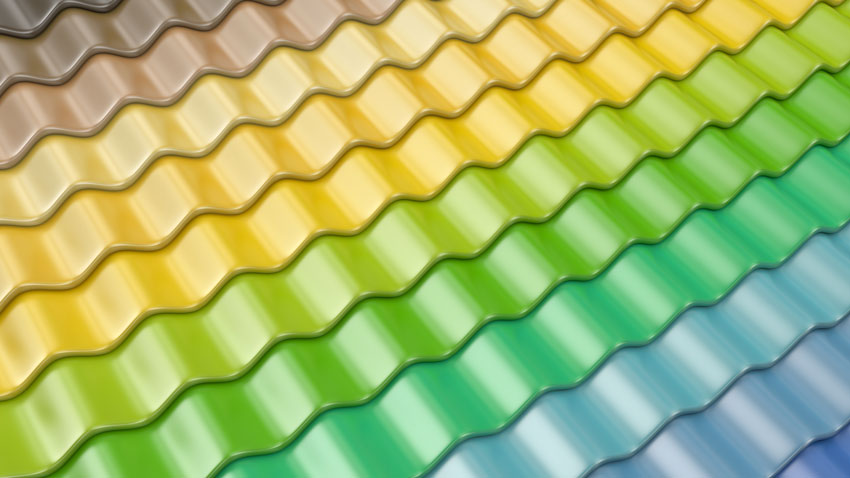Color Matters: The World: Color and energy matters
When summer comes to your Hemisphere, can color reduce the energy consumption in your home or business? Consider this: Would you be cooler wearing a light shirt or a dark shirt on a hot sunny day? If your science teacher or parents didn't convince you, the scientific fact is that white reflects the radiant energy rays of the sun and black absorbs them.
The same principle has a significant impact on a house. The hotter the roof, the hotter the rooms below. Light colored roofing and /or reflective coatings are like a white shirt for your house because they reflect radiant energy. Even a light grey hue is better than a blue or green.

Fact:
Light colors and reflective coatings cut cooling costs.
Statistics:
 |
On a 90 degrees F / 32.2 C clear sunny, day in Austin Texas, a white roof had a temperature of 110 degrees F / 43.3 C, an aluminum coated roof, 140 degrees F / 60 C, while a black, single ply roof, a temperature of almost 190 degrees F / 87.8 C (yes, one hundred and ninety degrees Fahrenheit, eighty seven plus degrees Celsius). |
Note:
Under ideal conditions, if the attic is well ventilated and its floor heavily insulated, heat absorbed by the roof may be exhausted. Unfortunately, most homes have less than ideal conditions.
More Statistics:
- A study in Florida revealed that by increasing heat reflectivity, homeowners saved an average of 23% if their cooling costs.
- A study by Lawrence Berkeley laboratory reveals that increasing the reflectivity of roofs and other surfaces in metropolitan areas could dramatically reduce energy costs nationwide.
- Maximum savings for a nationwide project (U.S.A.) could be $10 billion in energy and equipment costs.
The colors used inside a residence or workplace can also save on energy costs. The Environmental Protection Agency reports that electric lighting accounts for 25% of the electricity used in the U.S.A. The same principle, the lighter the color the higher the reflectivity can be applied. Dark walls absorb more light and reflect less. Consequently, far more lighting is required for rooms with dark walls than those with light walls. In addition to the walls, it is a good idea to keep the ceiling light and bright for good reflectance.

Most major paint manufacturers can tell you the Light Reflectance Value (LRV) of any color paint chip. White reflects 80% of the light, black 5%. Therefore, the higher the LRV number of the paint color, the less artificial light you will need.
Caution: Don't go overboard. An extremely high lighting level combined with very light walls is bad if it creates glare and / or too much brightness on the wall. This causes excessive stimulation and irritation of the eyes. Eye fatigue will follow.
A tip for saving on heating and cooling costs: The color of a room will affect your perception of temperature. Tests document that people estimate the temperature of a room with cool colors, such as blues and greens, to be 6-10 degrees Fahrenheit cooler than the actual temperature. Warm colors, such as reds and oranges, will result in a 6-10 degrees Fahrenheit warmer estimate. The colors used in this test are Munsell Value 7-9 Chroma 1-4.
Color does play an important role in energy conservation.